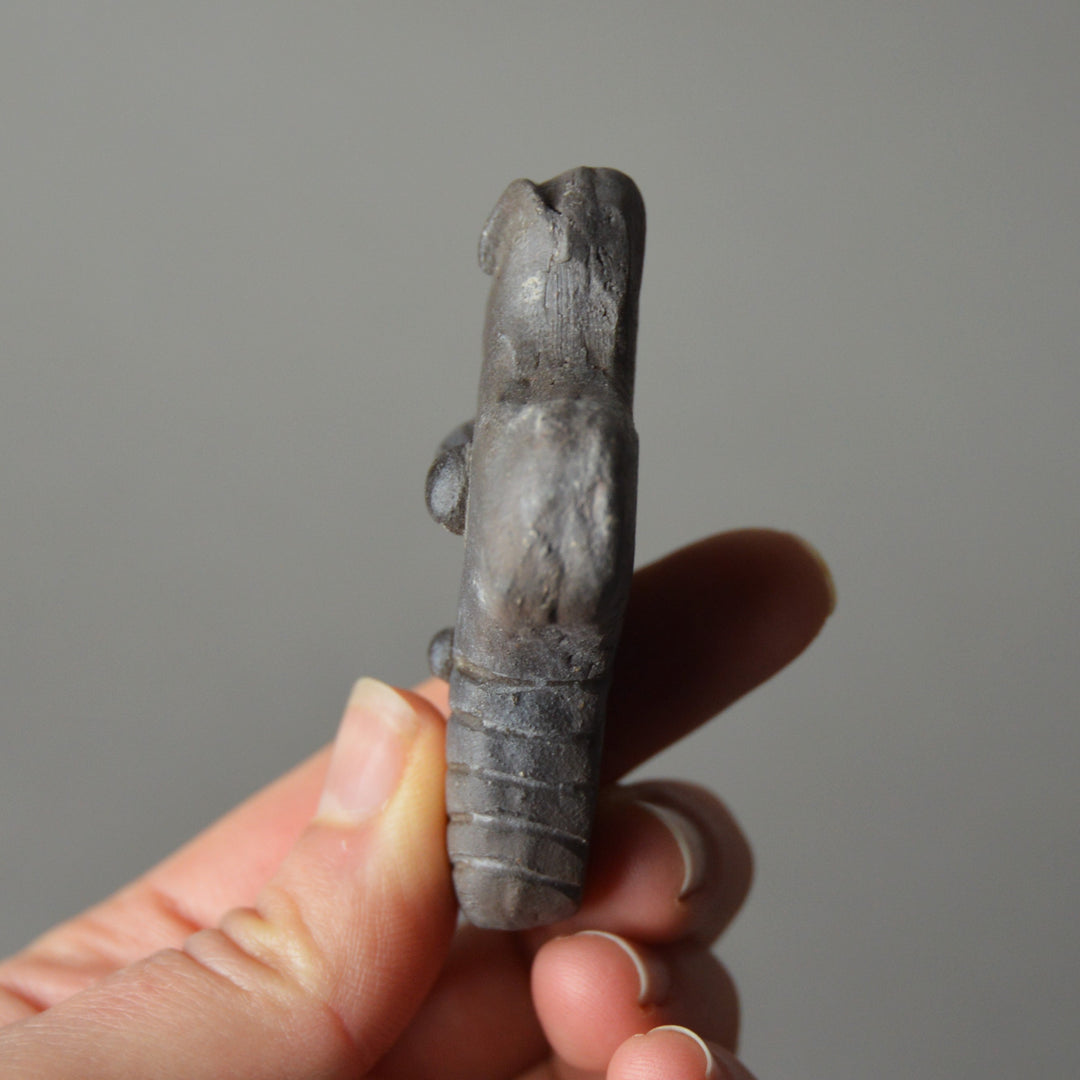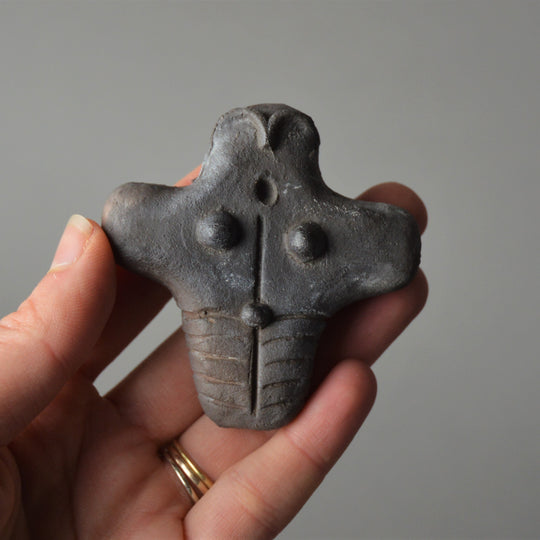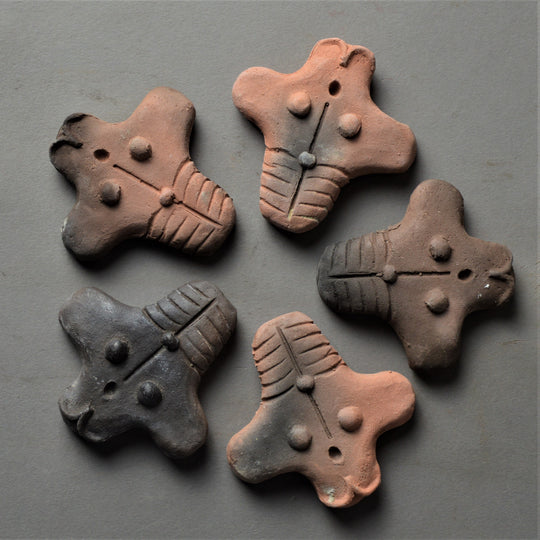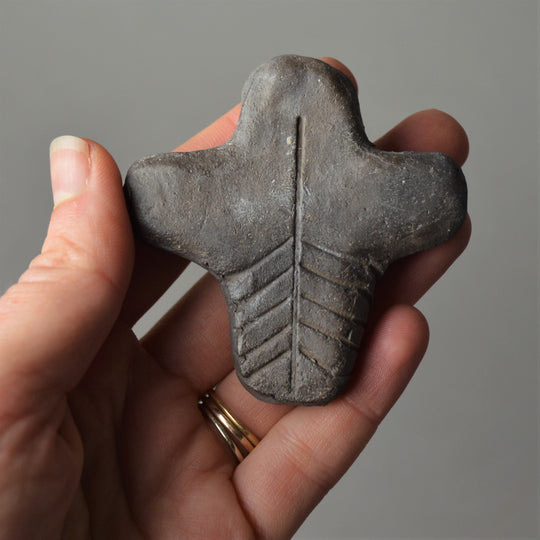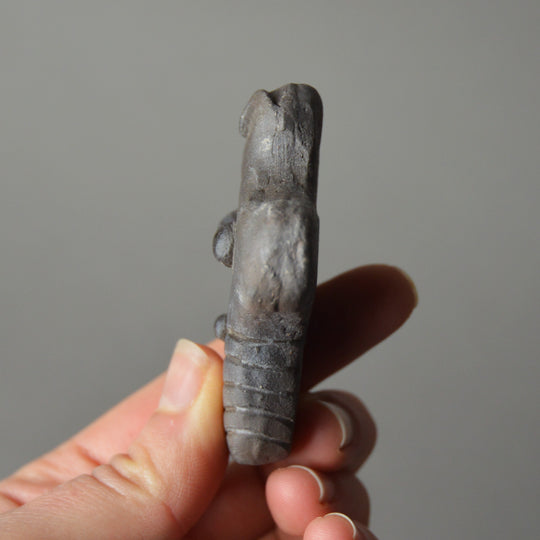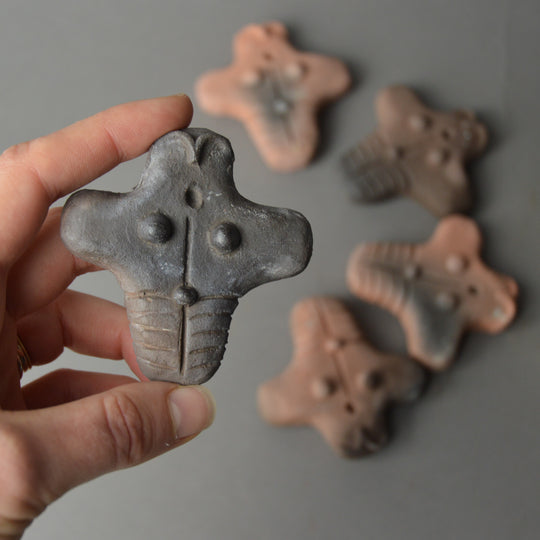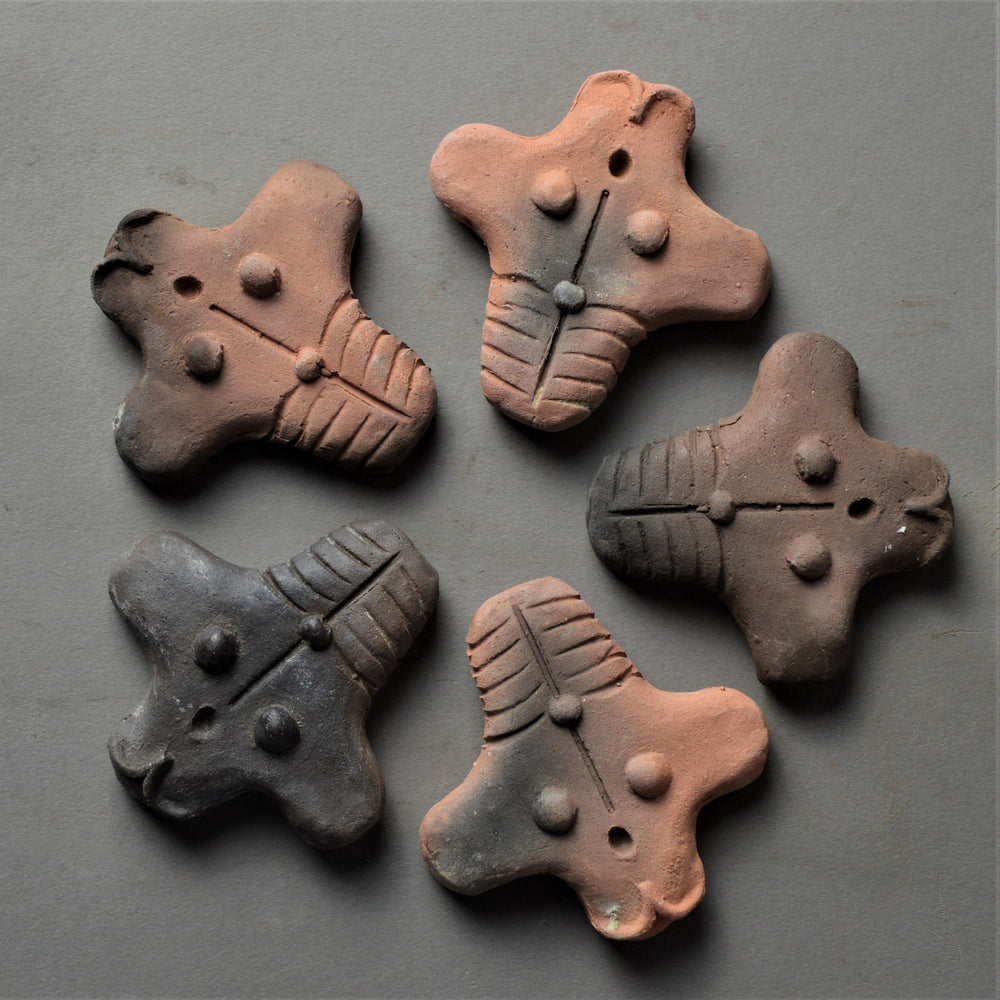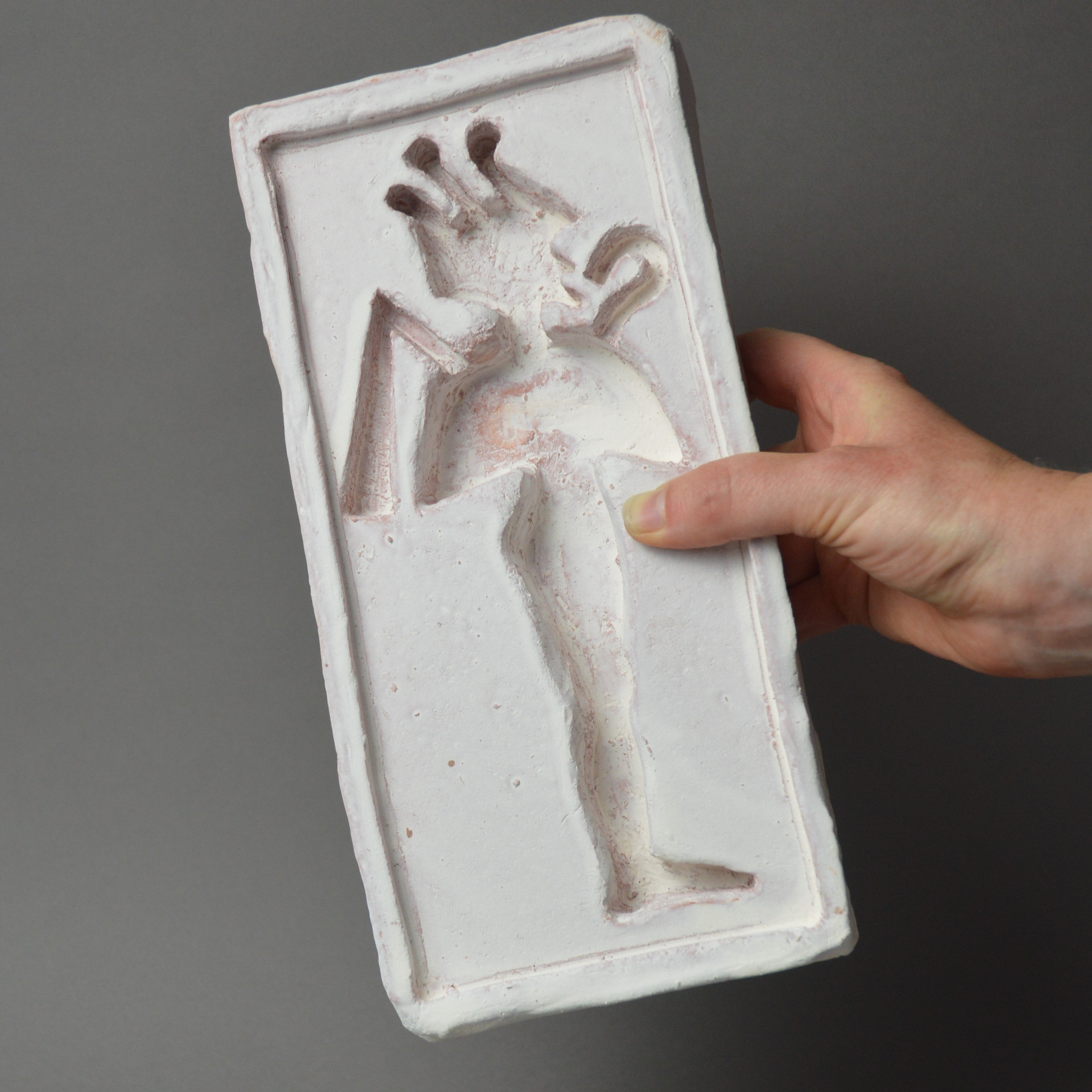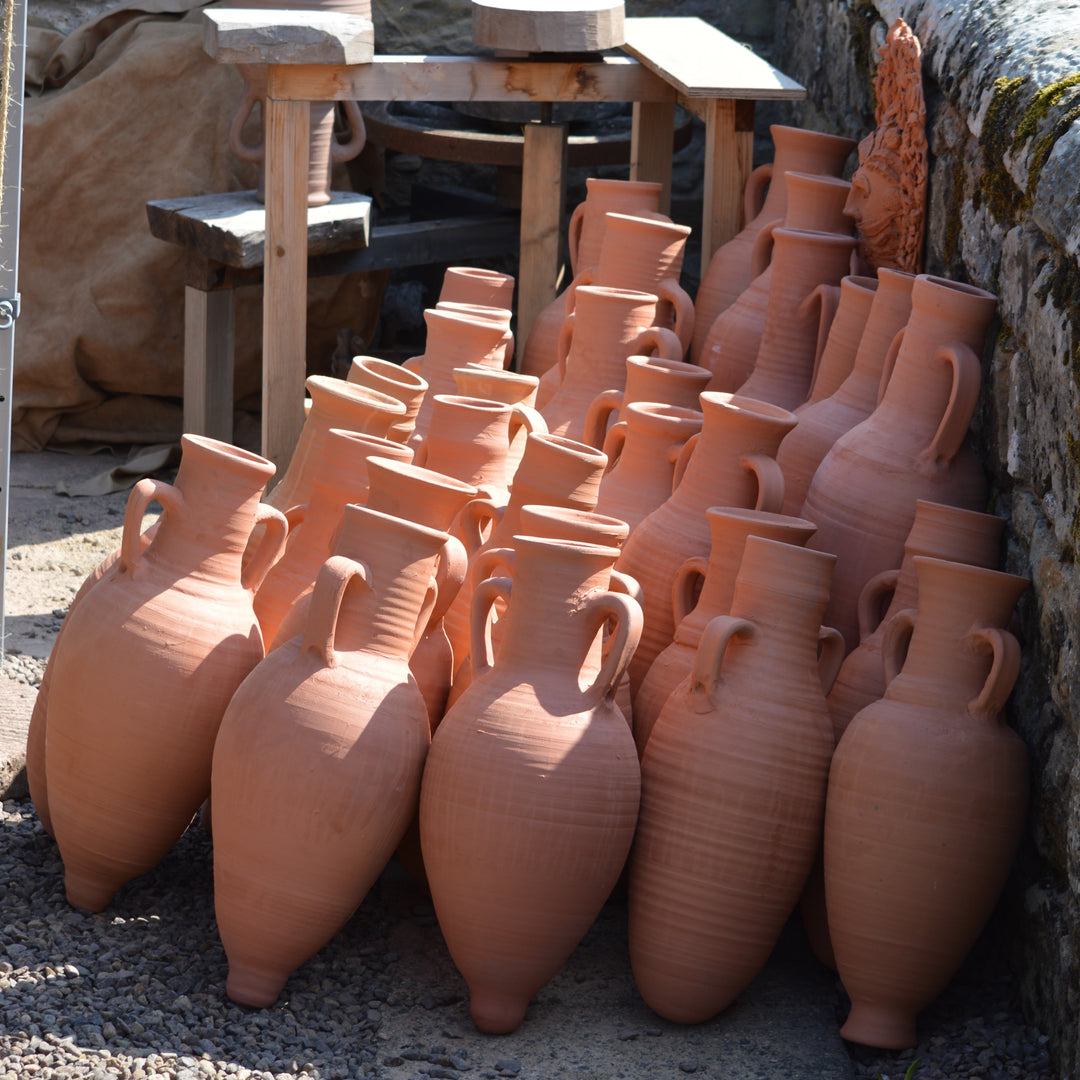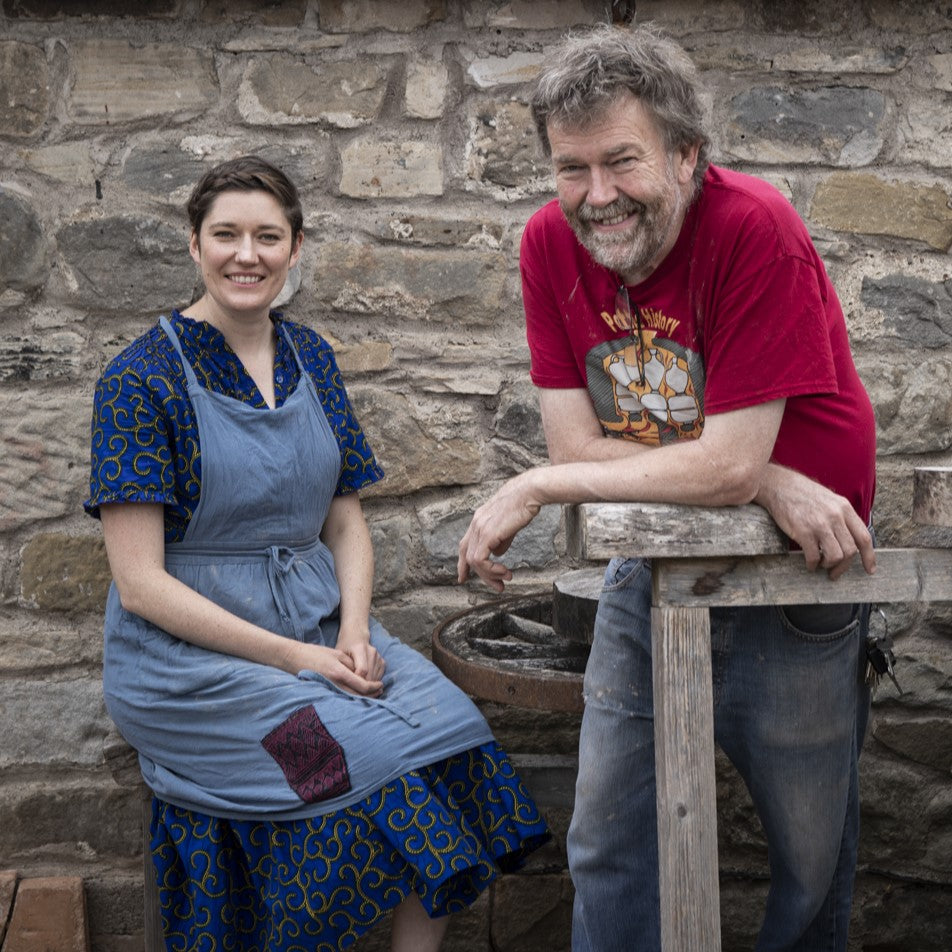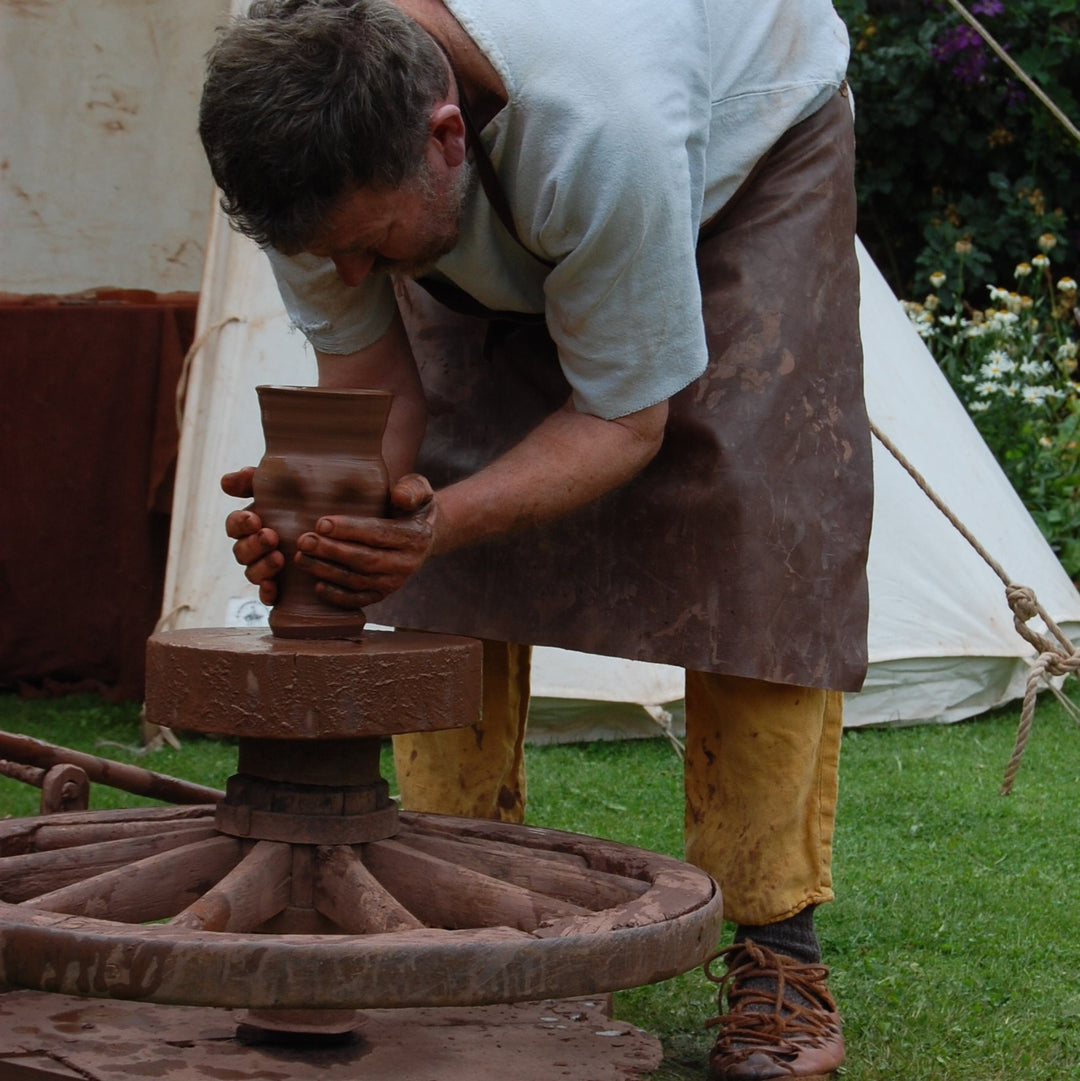Sannai Maruyama Dogu
- In stock, ready to ship
- Inventory on the way
Details
Made to nestle neatly in the palm of your hand, this replica of a crucifix Dogu is inspired by a find from the largest Jomom settlement found to date, Sannai Maruyama. This magnificent site has offered up over 1800 Dogu figures making it the largest single assemblage of these intriguing ceramic sculptures.
With this captivating little figure, we are fortunate that it was found whole, as it is often the case that Dogu figures are missing heads and arms and are not always reunited with these limbs.
We thoroughly enjoyed making this precious little object as part of our work with the new Circle of Stones Exhibition that is now on show at the Stonehenge visitors centre. The exhibition is set in the prehistoric British landscape and allows visitors to enjoy some exquisite objects from Prehistoric Japan. It is the bringing together of two influential Prehistoric cultures in one space.
Please note that the colouring of these Dogu varies greatly due to the firing conditions. You will get a Dogu marked by the smoke and fire that forged her, and your Dogu will be one-of-a-kind.
Period
Early and middle Jomon (3500-1500BCE)
Materials
Smoke fired Terracotta
Dimensions
Approx. - Height 70 mm, width 65 mm
General History
The roots of ceramic culture reach deep into Japan's ancient past, with the first ceramic vessels being hand formed by skilled hands around 14,000 years ago at the start of the Jomon period. This ancient cultural blossoming saw the creation of thousands and thousands of mind-blowingly beautiful objects in the form of Flame Pots and Dogu figures. It continued until sometime over 2000 years ago when the advent of rice agriculture and metalworking heralded the beginning of a new phase in Japan's history.
What are Dogu figures?
The written characters that make up the Japanese word Dogu mean "earth" and "spirit" or "Soil" and "Doll", depending upon who you ask, and they make up a fascinating collection of ancient ceramic figures that are most famous for representing the human form. More specifically, they are thought to predominantly represent female figures, although there are a few examples of Dogu being made in the form of animals and even plants.
What is so appealing about Dogu is that they represent a state of self-awareness within the ancient people that crafted them and this sense of self appeals to our modern sense of self. People love to connect and relate with other people.
What were Dogu used for?
The question of use may well be the most compelling of all the questions relating to Dogu figures and one to which it is unlikely we will ever have a clear answer. What we know about Dogu is that they have been found in large numbers and often in fragmented states that suggest they had been deliberately broken.
Archaeologists have found Dogu figures in houses, burials and middens from dates that span the vast expanse of the Jomon period; the number of Dogu figures recorded to date is 18,000.
What was life like in the Jomon era?
Jomon enthusiasts widely believe that the Jomon period was a time of abundance when people lived in harmony with nature, hunted and gathered food from the rich forests that made up their home. With all their needs attended to, it is said that they lived in unanimity with one another. In fact, Japan is thought to have enjoyed an unusually high population density during this period, seeing population numbers that were exceptional for a culture that had not yet seen the advent of agriculture.
What is the Circle of Stones Exhibition at Stonehenge?
The replicas we have handcrafted for this collection were made as part of our work for the Circles of Stone: Stonehenge and Prehistoric Japan exhibition. The new exhibition celebrates the culture of Prehistoric Japan through a stunning collection of objects from some of Japan's most exciting prehistoric sites. The display will walk you through the story of Japanese settlements, their incredible stone circles and the beauty of the middle and late Jomon craftsmanship. A period of time that was roughly the same time as the building of Stonehenge, two separate cultures leaving an indelible mark on this world.
Many thanks to Susan Greaney and Simon Kaner for their help in facilitating our visit to see the flame pots at the British Museum and for providing us with additional information throughout the project.
Production
Completely hand-built from clays similar to that used by the original potters, this vessel has been fired in a wood fire to emulate the original's surface colouration. When there is evidence of potters' tool use, I have replicated such tools using stone, wood, shell, bone, and antler, based on information gained from marks on original artefacts.
Firing
We have fired this figure to emulate the ancient firing conditions. The original pot was fired in an open wood fire, in close contact with the fuel, a process that leaves its mark on the clay as variations in the surface colour. However, the low temperatures achieved in open firings also result in relatively weak ceramics, so this figure has been fired to a somewhat higher temperature to strengthen it, in a unique firing process that allows me to achieve an authentic appearance to the pot.
Postage
We send all items using a second-class postal service; if you wish to have an item sent first-class, please contact us for a quote. Many Thanks
SHIPPING
'Add To Cart' items are ready to send straight away. Please be aware that if bought alongside 'Pre-order' items, your order will be sent when all items are ready.
'Pre-order' items are made to order, and we will dispatch them as soon as we have handcrafted them for you; this usually takes 90 days, but international orders can take a little longer.
We ship our fabulous replicas worldwide.
Shipping costs are worked out during checkout. They are based on where you are in the world and how heavy your parcel is, which can be very variable.
All items are sent using a second-class postal service. If you wish to have an item sent first class, please contact us for a quote. Many Thanks
RETURNS
If you aren't completely satisfied with your Potted History piece, please get in touch to organise a return. Email us at
clare@rothburycreates.co.uk
Then you can send it back at your own cost in an unused condition within 30 days, and we'll refund you for the cost of the item or items returned. If you include your order number with the returned package, that will speed things up. Please leave any original packaging intact.
Our returns address is:
Potted History, Gregory Court, Rothbury, Northumberland, NE65 7SW
PRODUCT VARIATION
Please be aware that due to items being handmade and finished, colour variations will occur during the making process, and each replica will have some differences. Also, know that the item photographed may not be the one that you receive, and colours can appear differently on different screens. Please ensure you look at all the images to get a fully formed idea of the item you are ordering as we try to capture the variations within the images we share. If you prefer a specific colour variation, please contact us before ordering.



